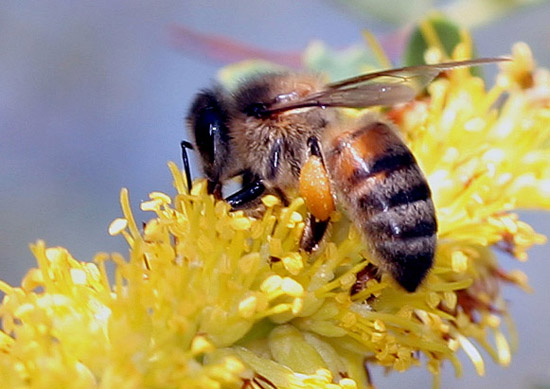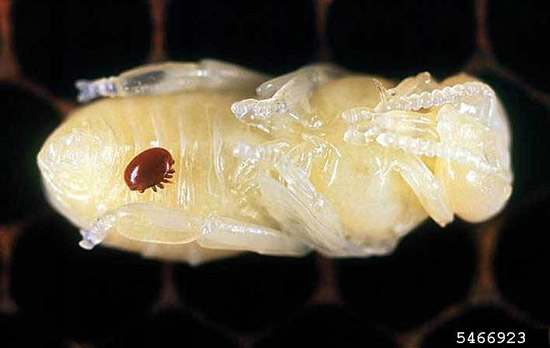Issue 6, June 3, 2013
Honey Bee Health Report by USDA and EPA
The U.S. Department of Agriculture (USDA) and the U.S. Environmental Protection Agency (EPA) released a comprehensive scientific report on honey bee health on May 2, 2013. The report states that there are multiple factors playing a role in honey bee colony declines, including parasites and disease, genetics, poor nutrition and pesticide exposure.

Adult honey bee.
The two agencies jointly released the report by a National Stakeholders Conference on Honey Bee Health that convened in October, 2012. The conference was developed by federal researchers and managers, along with Pennsylvania State University. It was convened to synthesize the current state of knowledge regarding the primary factors that scientists believe have the greatest impact on managed bee health.
Key findings include:
Parasites and Disease Risks:
The parasitic Varroa mite is recognized as the major factor underlying honey bee colony loss in the U.S. and other countries. There is widespread resistance to the chemicals beekeepers use to control mites within the hive. New virus species have been found in the U.S. and several of these have been associated with Colony Collapse Disorder (CCD).

Varroa mite on a honey bee pupa.
Increased Genetic Diversity Needed:
U.S. honeybee colonies need increased genetic diversity. Genetic variation improves bees thermoregulation (the ability to keep body temperature steady even if the surrounding environment is different), disease resistance and worker productivity. Honey bee breeding should emphasize traits such as hygienic behavior that confer improved resistance to Varroa mites and diseases (such as American foulbrood).
Poor Nutrition:
Nutrition has a major impact on individual bee and colony longevity. A nutrition-poor diet can make bees more susceptible to harm from disease and parasites. Bees need better forage and a variety of plants to support colony health. Federal and state partners should consider actions affecting land management to maximize available nutritional forage to promote and enhance good bee health and to protect bees by keeping them away from pesticide-treated fields.
Improved Collaboration and Information Sharing:
Best Management Practices associated with bees and pesticide use exist but are not widely or systematically followed by members of the crop-producing industry. There is a need for informed and coordinated communication between growers and beekeepers and effective collaboration between stakeholders on practices to protect bees from pesticides. Beekeepers emphasized the need for accurate and timely bee kill incident reporting, monitoring, and enforcement.
Additional Research on Pesticide Risks:
The most pressing pesticide research questions relate to determining actual pesticide exposures and effects of pesticides to bees in the field, and the potential for impacts on bee health and productivity of whole honey bee colonies.
The report will provide important input to the Colony Collapse Disorder Steering Committee led by the USDA, EPA, and the National Agricultural Statistics Service (NASS). The Colony Collapse Steering Committee was formed in response to a sudden and widespread disappearance of adult honey bees from beehives, which first occurred in 2006. The Committee will consider the report's recommendations and update the CCD Action Plan which will outline major priorities to be addressed in the next 5-10 years. This will serve as a reference document for policy makers, legislators and the public and will help coordinate the federal strategy in response to honey bee losses.
To view the report, which represents the consensus of the scientific community studying honey bees, visit: http://www.usda.gov/documents/ReportHoneyBeeHealth.pdf. (Modified by Phil Nixon from an EPA and USDA Press Release)
Author:
Phil Nixon